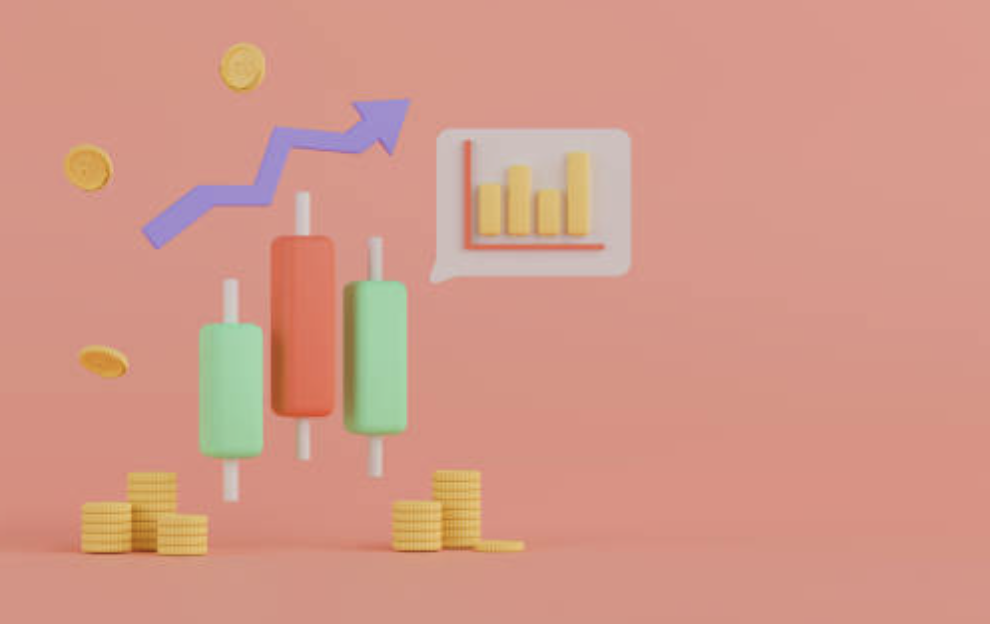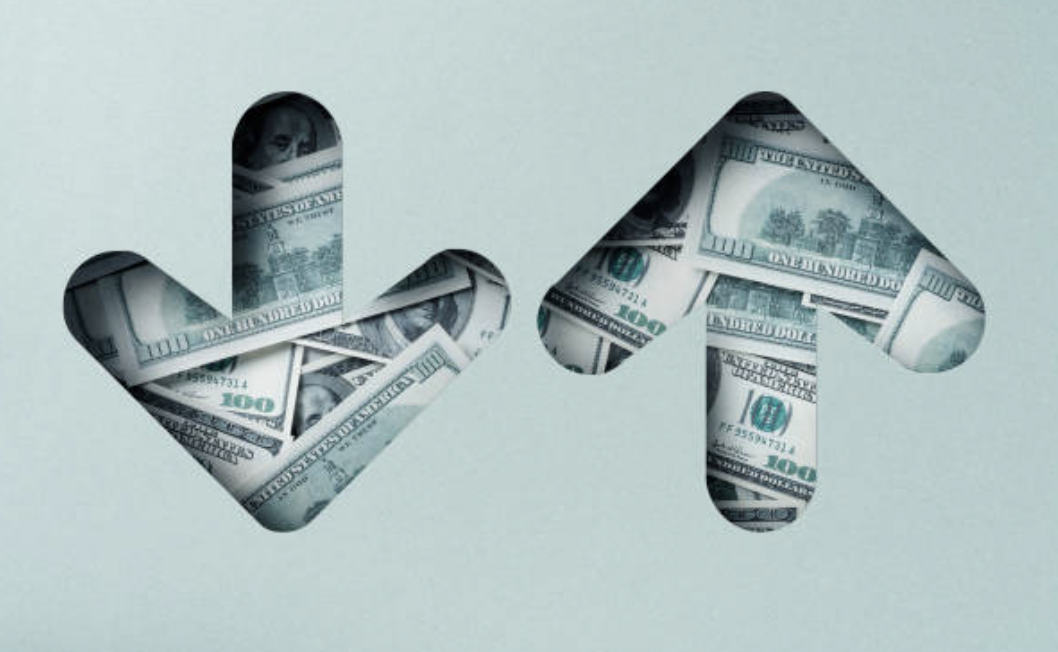
Kayla Cooke
Nov 19, 2021 11:07
As a trader, you need to combine technical and fundamental analysis with knowing where the price is next.
For technical analysis, you need various chart patterns that can help you identify the overall price direction. Without them, you'll leave clueless about what's happening on the chart. Don't worry, as there are chart patterns that can help you find the trend's direction.
So, in this guide, we'll discuss the top ten chart patterns you should know to ease your trading journey.
Price patterns in technical analysis frequently identify crossovers between rising and declining trends. Many analysts use chart patterns to locate price trends. You can apply the patterns to the bar, candlestick, and line charts and on any timeframe from 1-second to 1-year.
There are two forms of patterns: continuation and reversal.
Continuation patterns presume that the price action will continue in the same trend. Short- to medium-term trends, as well as breakaways from the consolidation period, are possible. The price movement reverses in a consolidation stage for a while, but it continues to advance in the trend direction.
Although continuous patterns come in various shapes and sizes, the triangle, pennant, flag, and rectangle are the most popular. We'll explain each of them later.
Reversal patterns show a shift in trend by traveling in the opposite direction of the existing trend. The trend stops for a few moments before reversing direction. These patterns indicate that one of the bulls or bears is losing the fight.
For example, in an uptrend, the bulls are in charge, but when reversal patterns happen, the bulls succumb to skirmish to the bears, and the market begins to fall. There are many other reversal patterns, but the most popular are head and shoulders, double top/bottoms, falling, and the rising wedge.
Now that you've understood what chart patterns are let's move to some of the important patterns you need to know. First, we'll mention key continuation chart patterns and how you can use them, and then we'll move to reversal patterns.
Triangles are a frequent pattern that you can characterize as converging price ranges, with lower lows and higher highs. The price action convergent forms a triangle. Triangles are divided into three types: symmetrical, ascending, and descending. You can trade the three forms of triangles in the same way for trading reasons.

A symmetrical triangle describes itself as a pricing range with a down-sloping upper level and an upward-sloping lower level.
A horizontal upper level and a higher sloping lower level create an ascending triangle.
A falling triangle has a horizontal upper level and a downward sloping upper level.
Triangles vary in length, but they always have two price swing highs and two price swing lows. It is because the price will ultimately approach the triangle's peak as it continues to converge; the closer the price gets to the peak, the tighter and tighter price action becomes, making a breakout more likely.
Pennants are chart patterns that develop following a big move. Buyers and sellers generally take a breather after a large upward or negative move before continuing to move the pair in the same direction. As a result, the price tends to fortify and form a small symmetrical triangle as a pennant.
There are two kinds of pennants; bearish and bullish.
A bullish pennant is a technical trading pattern that signals that a strong upward price trend is about to continue. When a market makes a large move upward, it stops and consolidates between converging support and resistance lines, forming a triangle.
A bearish pennant is a technical trading pattern that predicts a negative price trend will continue. They're the polar opposite of bullish pennants in that the market stops after a major move down instead of consolidating after moving up.

Rectangles are a type of continuation pattern that appears as a trading range during a trend halt. Two comparable highs and two comparable lows readily identify the pattern. The top and bottom of a rectangle may be formed by connecting the highs and lows to produce two parallel lines.

There are two types of rectangle patterns; bearish and bullish.
Prices fluctuate between the trendlines for a period in a bullish pattern, after which the uptrend continues, then the rectangle pattern establishes. You can identify a bullish trend if the breakout occurs above the resistance line.
The prices move between the trendlines for a period in a bearish rectangle pattern, after which the decline continues, then the rectangle pattern creates. If the breakout occurs below the support line, the trend is considered bearish.
Flags are continuation patterns of the trend that preceded the flag. After an illustrative price rise or fall, they establish a short-term reversion trend with parallel rising or falling upper and lower trend lines, forming a short-term reversing trend.
The flagpole represents the previous trend, and the flag represents the reversion immediately before the breakout or collapse that maintains the previous trend.
Like pennant and rectangle patterns, you can use the flag pattern for a bullish and bearish trend.

Bull flags appear when a price rise peaks and a short-term reversal downturn develops. The trend lines' beginning points should link the highest highs and lows.
Bear flags appear following a significant price drop that tries a short-term uptrend reversal. Bull flags are the polar opposite of this. After starting at the base, the trend lines join the lows and highs.
The cup and handle is a bullish pattern that indicates that an uptrend has halted but will resume if the pattern is validated. Instead of a V shape with equal highs on both sides, the cup part of the design should be a U shape that matches the bottom of a bowl.
The handle takes the shape of a brief pullback that mirrors a flag or pennant chart pattern on the side of the cup. The price might break out to new highs when the handle finishes and resume its upward trajectory.

There are a few phases to trading using continuation patterns. They are as follows:
To begin, a trader must recognize a past pattern. Next, it's critical to determine the current trend since continuation patterns might be bullish or negative.
Second, traders should enter the trade once a breakthrough point appears. The breakout points denote the consolidation phase and indicate whether the price movement is going with or against the trend.
When a breakout occurs, a trader should place positions in the trend's direction. It is a buy sign if the price breaches above any of the continuation patterns.
It's a sell signal if the price breaches under the Continuation patterns, on the other hand. It is because stop-loss orders are placed outside of the Continuation patterns.
Because various factors influence the market, there is no guarantee that continuation patterns will always be right. There's still the possibility of false breakouts. It is a false breakout when the price breaks out of patterns and returns within or moves in the opposite direction. Traders must search for volume to address this obstacle. False breakouts are unlikely to happen if the volume is growing.
Continuation patterns can work on the short-term and long-term trends. However, when the present trend is smaller, the price is likely to continue to advance in the same direction.
Locate the pattern when the market is trending upwards
Wait for the pattern to fully appear on the chart
Enter the trade after the pattern develops
Use a stop-loss near the recent low
Leave the trade when the pattern disappears
Locate the pattern when the market is trending downwards
Wait for the pattern to fully appear on the chart
Enter the trade after the pattern surfaces
Use a stop-loss near the recent high
Leave the trade when the pattern disappears
Now, let's move towards the reversal patterns
The head and shoulders are a chart pattern that consists of a baseline with three tops, the outside two of which are similar in height and the central peak being the tallest. The head and shoulders pattern projects a bullish-to-bearish trend reversal.
It is one of the most dependable trend reversal patterns. Moreover, it's one of the numerous top patterns that indicate the conclusion of an upward trend to various degrees of accuracy.

The inverse head and shoulders, sometimes known as a head and shoulders bottom, is the extreme opposite of a head and shoulders chart. The head and shoulders top is inverted, and it is used to anticipate reversals in downtrends.
When an asset's price action satisfies the following criteria, this pattern is identified: The price drops to a trough and then rises; the price drops below the previous trough and then grows again; and lastly, the price declines but not as far as the second dip. Finally, following the completion of the final dip, the price begins to rise, aiming for resistance at the tops of the prior troughs.
Double tops and bottoms indicate places where the market has failed twice to break through a level of support or resistance. An early boost up to a resistance level is accompanied by a second missed try, resulting in a trend reversal in the case of a double top, which often looks like the alphabet M.
On the other hand, a double bottom resembles the letter W and happens when price attempts to push through a support level, is refused, and then attempts to break the support level again.

A rounding top is a technical analysis chart pattern characterized by price changes that, when illustrated, take the form of an upside-down U.
The Rounding Top pattern takes somewhat longer to create than the other chart patterns described. However, it demonstrates a steady shift in attitude from positive to negative.
A rounding bottom defines a sequence of price moves that graphically create a U shape it applies in technical analysis. Rounding bottoms appear towards the end of protracted downtrends and signal a change in long-term price activities.

Triple tops and bottoms complement double tops and bottoms. If the double tops and bottoms look like an M or W, the triple tops and bottoms look like a cursive M or W: three moves up (in a triple top) or three moves down (in a triple bottom). Several missed tries to break through a range of support or resistance are represented by these price patterns.
Price attempts three times to break above resistance in a triple top, fails each time, and retreats. In contrast, a triple bottom happens when the price attempts three times to break through a support level, fails, and then rebounds back up.

Wedges, like pennants, construct themselves by using two meeting trendlines; however, a wedge is distinguished by the fact that both trendlines are going in the same trend, up or down.
A wedge angled down indicates a pause in an upswing, whereas an angled up wedge indicates a brief halt in a falling market. Volume generally decreases throughout the creation of the pattern, similar to pennants and flags. It increases after the price breaks up or beneath the wedge pattern.
You can use a wedge pattern as a continuation or reversal pattern, and there are two sorts of wedge patterns: falling and rising wedge.
When the price fluctuates between upward tilted support and resistance levels, a rising wedge produces. It is because the slope of the support line becomes more tilted than the resistance line in this case.
Higher lows form quicker than higher highs, implying that higher lows form faster than higher highs. It results in a wedge-shaped structure, which is how the chart pattern got its name! We know a big move is happening as prices consolidate, so we can expect a breakout to either the top or bottom.
It's generally a bearish reversal pattern if the rising wedge appears following an upswing. If it occurs during a downturn, on the other hand, it may indicate that the decline will continue.
The falling wedge, like the rising wedge, can be a reversal or continuation indication. It is created near the bottom of a downtrend as a reversal indicator, suggesting that an upswing will follow.
It is formed during an uptrend as a repeating signal, indicating that the upward price action will continue. The falling wedge, unlike the rising wedge, is a bullish chart pattern.

You can draw a neckline on reversal patterns to use them. A neckline appears at a support or resistance level and serves as an entrance point for reversal patterns. A downtrend shows up when the price falls below the neckline. An uptrend pops up when the price goes above the neckline.
The entry locations should be above or below the neckline, not at it. A trader can set a stop-loss by measuring the gap between reversal patterns and the neckline, breaking it by two, and then setting a stop-loss.
It's worth noting that reversal patterns don't necessarily indicate a shift in direction. Even when a reversal pattern emerges, the price may continue to move in the trend. So it is when a trader must exercise caution and wait for the trend to be confirmed. By using indicators like the RSI or Stochastics, a trader can validate the trend.
You can improve your trading approach by recognizing important reversals. When looking for these patterns, traders should seek a shorter reversal instead of a longer one, as lengthier reversals might offer misleading signals.
Locate the pattern when the market is trending downwards
Wait for the pattern to fully appear on the chart
Enter the trade after the pattern appears
Use a stop-loss near the recent low
Leave the trade when the pattern disappears
Locate the pattern when the market is trending upwards
Wait for the pattern to fully appear on the chart
Enter the trade after the pattern begins
Use a stop-loss near the recent high
Leave the trade when the pattern disappears
Although these patterns can present you with entry and exit points, you must use technical indicators like the RSI or MACD along with them. These technical indicators are very helpful in determining the course of the price. In this way, you can confirm the direction of the trend, and the chart patterns won't produce false signals.

Nov 18, 2021 17:28

Nov 19, 2021 11:31